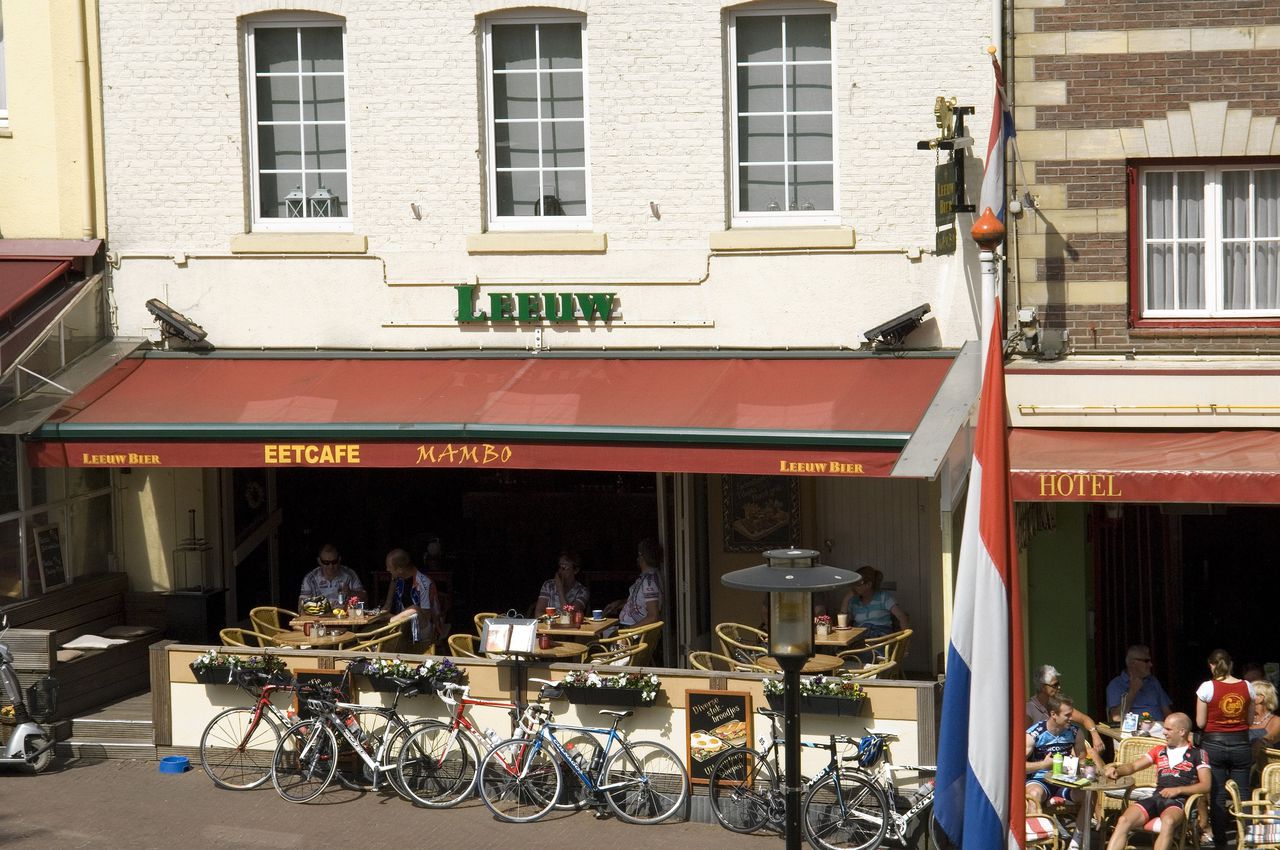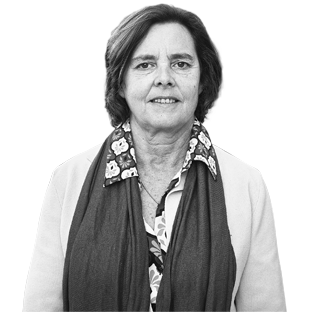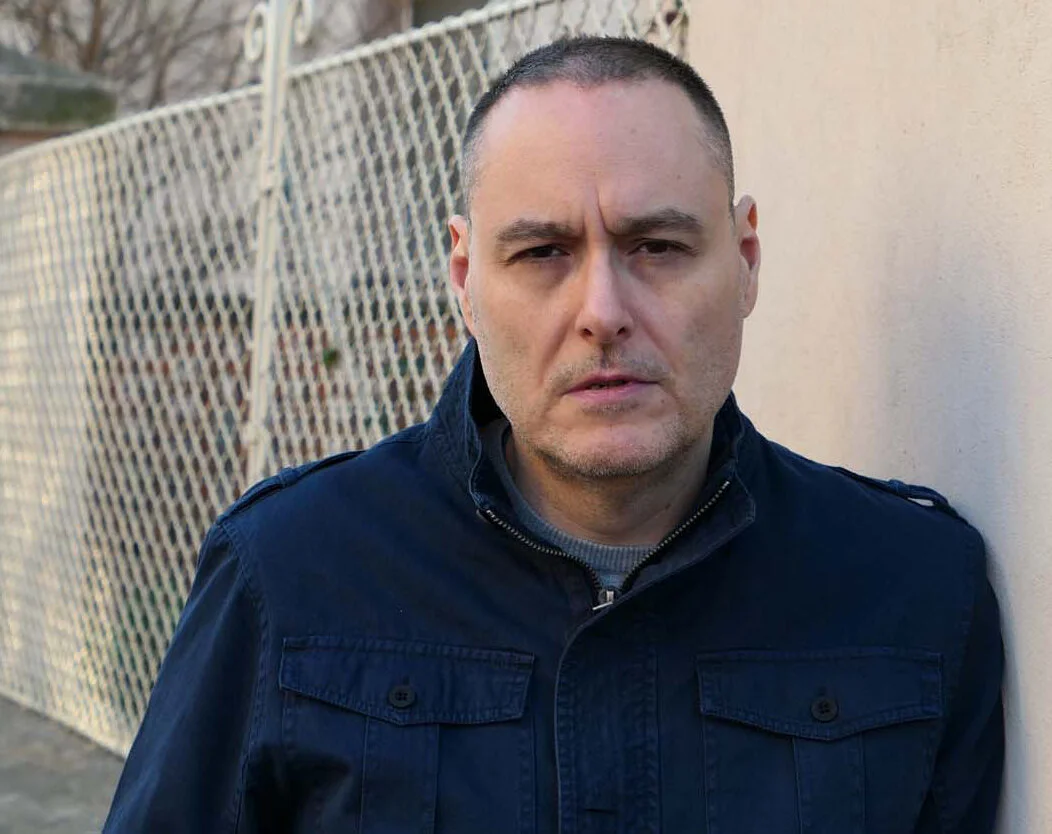The Cauberg became the final climb of the Amstel Gold Race thanks to the Limburg Handelsgeest

At that well cover, that’s where it is. On a third of the Cauberg, just past the first corner, Levien points points to the other side of the road. This is the place where the climb on its steepest is: 12 percent. You can’t see that with the naked eye, but he was there when it was determined. In 1991, with an old -fashioned spirit level, by two Belgian bicycle enthusiasts who charted all slopes in the area. « They came to 11.8 percent. And then you can finish upstairs. »
There is no one who knows more about the Cauberg than Levien Spits (79). The retired HEAO teacher wrote no fewer than three books about the slope in his birthplace, the latter appeared a few months ago. You can safely say that he is ‘crazy’ of the Cauberg, says Spits. ‘Caubergologist’, mentioned Dagblad The Limburger Him ever.
The climb is twelve hundred meters long, and 69 meters high. A hollow road that winds up through two turns from the center of Valkenburg aan de Geul to the village of Vilt. The Cauberg is certainly not the most beautiful slope in Heuvelland in South Limburg. And also not the toughest – or ‘the smartest’, in local dialect. The Keutenberg, a little further in Schin op Geul, is many times steeper. De Camerig, near the Drielandenpunt, is many times longer.
Yet De Cauberg is by far the most famous slope in Limburg – and that for almost a hundred years. What the Koppenberg and the Oude Kwaremont are for Flanders is the Cauberg for the Netherlands: cultural cycling heritage. Five World Cups were held there, countless NKs, the Tour de France arrived twice. But above all the Cauberg is connected to the Amstel Gold Race. For almost 55 years the climb has been in the trail of the country’s only cycling classic. After eight years in a modest role, the ‘The cathedral of Dutch cycling’ (Mart Smeets) returns this year as the last climb in the final.
Drawings in the marl cave
Trichterweg, Maastrichterweg, Couberg. The road from Valkenburg to Vilt – and then on to Maastricht – had different names over the years. Nowadays it is asphalted, but that was not always the case: from the early 1920s the road surface was tamped gravel, between 1934 and 1969 there were glazed bricks-with conondwarsliggers, to prevent shifts.
Levien Spits describes it all meticulously in his book De Cauberg. 200 years of history in 50 stories and 80 photos. The author has a personal relationship with the place: he was born at the foot of the Berg, on Grendelplein – then, just like now, a place for catering and entertainment. His parents were the managers of Hotel ‘t Centrum, now a pancake restaurant. « From my earliest childhood: can you go on the Cauberg by bike? If so, then you count. If not, then you have to remain silent. »
The first cycling race on the Cauberg, writes in his book, was held in 1933. The local gendarmes were a blind eye: according to the Road Traffic Act, cycling races on the public road at the time were not allowed. Then it went quickly: five years later a World Cycling World Cup was already held in Valkenburg. To that end, a drawing was made in the municipal marl cave, signed by the winner – a ritual that was subsequently repeated at every World Cup and every Tourfinish. The drawings can be viewed by appointment – the guide takes a sturdy lamp with you.


Managers with a plan
We walk up, the Cauberg on. While students, cyclists and seniors on e-bikes rise up, striker talks about the history of the Cauberg and the Amstel Gold Race. That competition has been around since 1966, but in the first editions the slope was not included in the course. Almost all sixties, cycling races were not welcome at the Cauberg, says Spits: the municipal administration gave ample job on the car and the moped. « The whole of Valkenburg closed at that time. »
Ultimately, it was the local hospitality entrepreneurs who managed to end the ‘draining’ on the Cauberg. They saw their income fall due to the introduction of VAT – and so a list had to be made up. Under the leadership of Hub Marx, manager of a chicken restaurant in the Muntstraat, the municipal administration was convinced to open the Cauberg for cycling races again. When the Peloton of the Gold Race in 1971 turned left on the Grendelplein for the first time, the Cauberg, Levien Spits was of course present. He barely got anything from the race: « I was tapping beer behind the buffet of our hotel. »
It would take thirty years for the Cauberg to play a central role in the Gold Race. The finish of the competition was traditionally in Maastricht. It was the current race director Leo van Vliet who thought that Valkenburg would be a much better finish place. From 2003 the finish of the Gold Race was at the top of the Cauberg.
Amstel’s final kilometers Gold Race
The first editions Nieuwe-Stijl will mainly be reminded by the many second places of Michael Boogerd, the only Dutch cyclist of size at the time. He grabbed no less than three times on the Cauberg next to the victory. « That was frustrating, » says Frans Maassen, then team leader of Boogerd-and herself a former winner. « Michael was able to drive on the Cauberg very well, but there was always one rider just a bit better. Some annoying Italian ran away again with the victory. »
In the course of the years, the race increasingly went ‘locked’: the riders waited to the Cauberg with attacks, resulting in a boring competition as a result. After a series of few appealing winners, race director Van Vliet decided that it was enough. From 2017, after the Cauberg there was an extra loop in the course of the Gold Race – and the climb was now 20 kilometers from the finish.
Loss
We are almost at the top. Almost every few meters, striker stopped to tell a story. About the postman from the neighboring felt, for example, who in 2001 was too fast on his fully loaded service bike. The NOS camera saw it happen – and in the evening he was on the news. (The fully loaded bicycle had a motor, as it turned out later).
Or about Marc Lotz, former rider and child of Valkenburg: he was born a little further on the Sibbergrubbe. At the 1998 World Cup he was allowed to race in his own backyard. A boy’s dream, but two months before his father died-and was worn to the earth at the Roman Catholic cemetery on the Cauberg. Fifteen times Lotz had to cross the Cauberg during the World Cup: fifteen times past his father’s grave.
It is stories like this, says Spits, to which De Cauberg owes its magic. It may not be the most beautiful slope in Limburg – history is almost tangible. There is also another explanation for the attraction of the climb, he continues. « I once read somewhere that the Cauberg is a bit voluptuous because of those two turns. That’s right. There are female forms in it. »
After we walk down again, we take a seat on a terrace on Grendelplein. We are joined by Constant Nuytens (82), mayor of Valkenburg from 1992 to 2007. During his term of office it was simply supreme for cycling on the Cauberg: a World Cup, the first arrival of the Gold Race, two Tour stages
Nuytens is a pronounced enthusiast of the bicycle: after his appointment as mayor, he immediately became a member of the Valkenburg cycling club. When asked why De Cauberg is the most famous slope of the Netherlands, he immediately has an answer: money and commercial spirit.
De Cauberg, says Nuytens, is the only climb in Limburg that starts in the city center, between the cafés and restaurants. The audience is in the front row. The local entrepreneurs in Valkenburg have always understood that perfectly. That was already the case in the 1930s, when the first World Cup was organized. And that was still so zero of this century, when the bungalow park placed a tourist sign on top of the mountain with ‘Col du Cauberg’.
« It’s economy, it’s business, » says Nuytens. « Cycling attracts people. Those people want to consume are looking for an overnight stay. And that is good for Valkenburg’s economy. It has to keep running. »
/s3/static.nrc.nl/wp-content/uploads/2025/04/18161426/data131039869-b7dfb8.jpg)
The decision of race director Van Vliet to make the Cauberg less prominent in the final, worked out well: since 2017 the Amstel Gold Race has had almost exclusively exciting editions with beautiful winners. Undisputed highlight: the men’s race of 2019, when Mathieu van der Poel drove back to the head of the race in the last kilometers from apparently lost position – and won.
Yet the Cauberg is back as a final climb this year. The idea came up with him, says Leo van Vliet, when he explored the course last fall. He was with the people of Flanders Classics, the company behind the Tour of Flanders, which from this year is the owner of the Amstel Gold Race. « They said: Leo, why don’t you just put the Cauberg twice in the final? The spectators are all in Valkenburg on the terraces, for them it is nicer. I immediately thought: they are right. » The trade spirit again triumphed.
Van Vliet is not afraid that the Gold Race will be just as boring again in the editions before 2017. Since then, a new generation of riders has risen « who dare to attack 80 or 100 kilometers before the finish » – with Van der Poel and this year’s top favorite, Tadej Pogacar, as the most important exponents. « And if it doesn’t work, we can always change it again. »
Money worries
Due to the money and the entrepreneurial spirit, De Cauberg got its fame – but there is also a source of worries for the future. The municipality of Valkenburg pays 130,000 euros annually for the finish of the Gold Race – and it is not given that she will continue to do so forever. The current mayor is « a socially moved man, » says Levien Spits on the terrace on Grendelplein. « But he also says: cycling costs money. »
In 2027 the current contract between the Gold Race and the municipality of Valkenburg will expire. The new Belgian owners are known for their commercial institution, which weighs heavier than local traditions and sentiments: previously they scraped the famous wall of Geraardsbergen from the Tour of Flanders without scruples. « I have cycling friends, » says Levien Spits, « who are afraid that the Belgians will soon say goodbye to the Cauberg. Although I can’t imagine they would be so stupid. »
Nuytens: « Well, everything is possible. Suppose the amount for the municipality will be doubled later, it can be very difficult. »
« A Gold Race without Cauberg in the final, because of the money? » Says Spits. « That would be terrible, that is not possible. As far as I am concerned, we will go on the barricades. »

:format(webp)/s3/static.nrc.nl/images/gn4/stripped/data133212425-ae69bf.jpg)
:format(webp)/s3/static.nrc.nl/bvhw/files/2019/08/web-1708zatwongjpg.jpg)
:format(webp)/s3/static.nrc.nl/images/gn4/stripped/data132512191-bf7b93.jpg)



